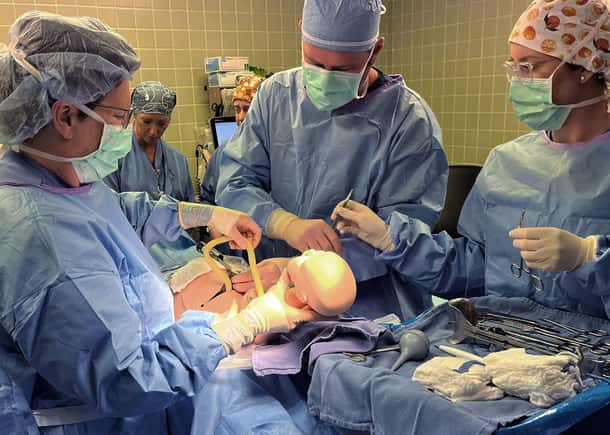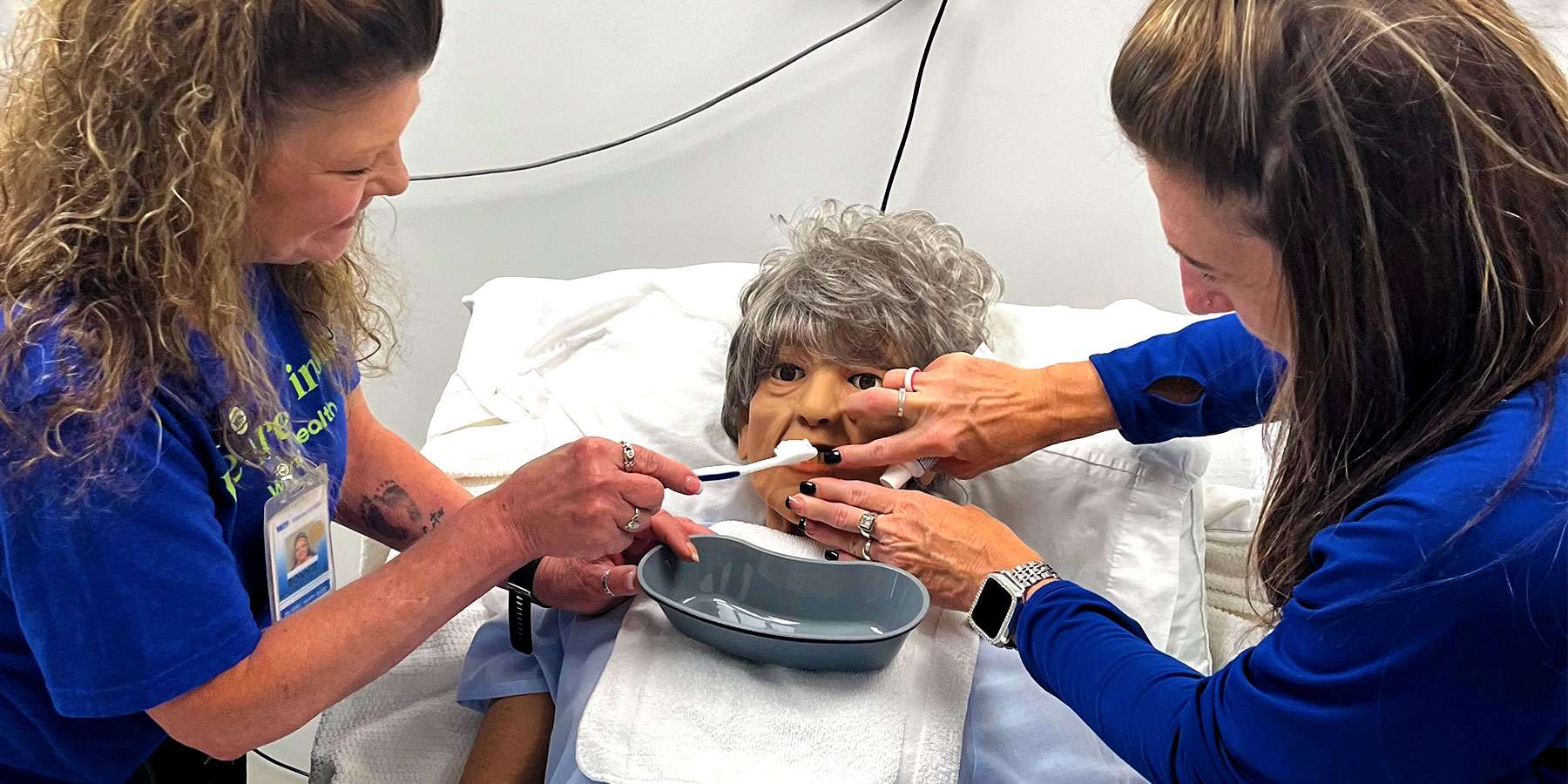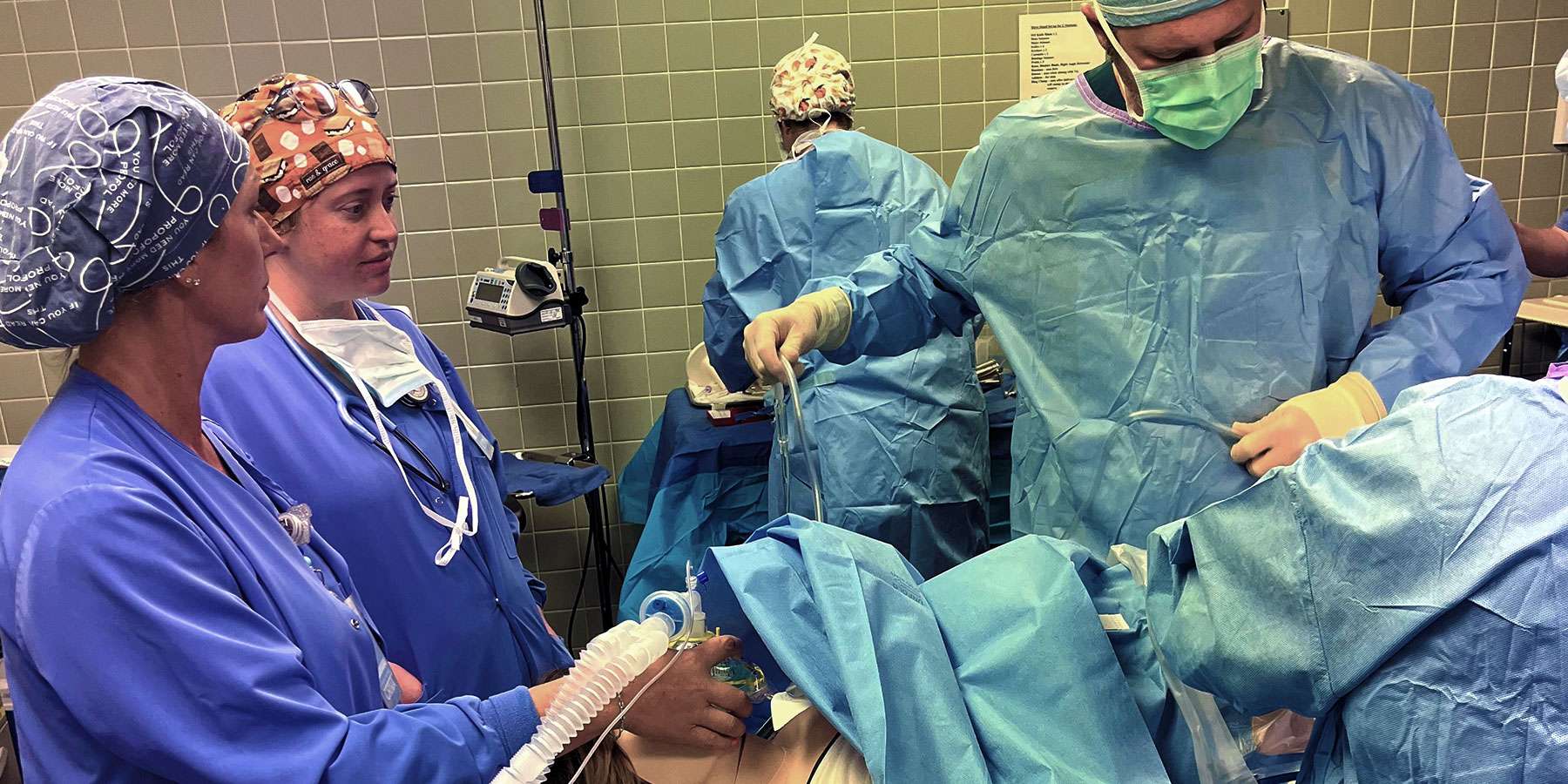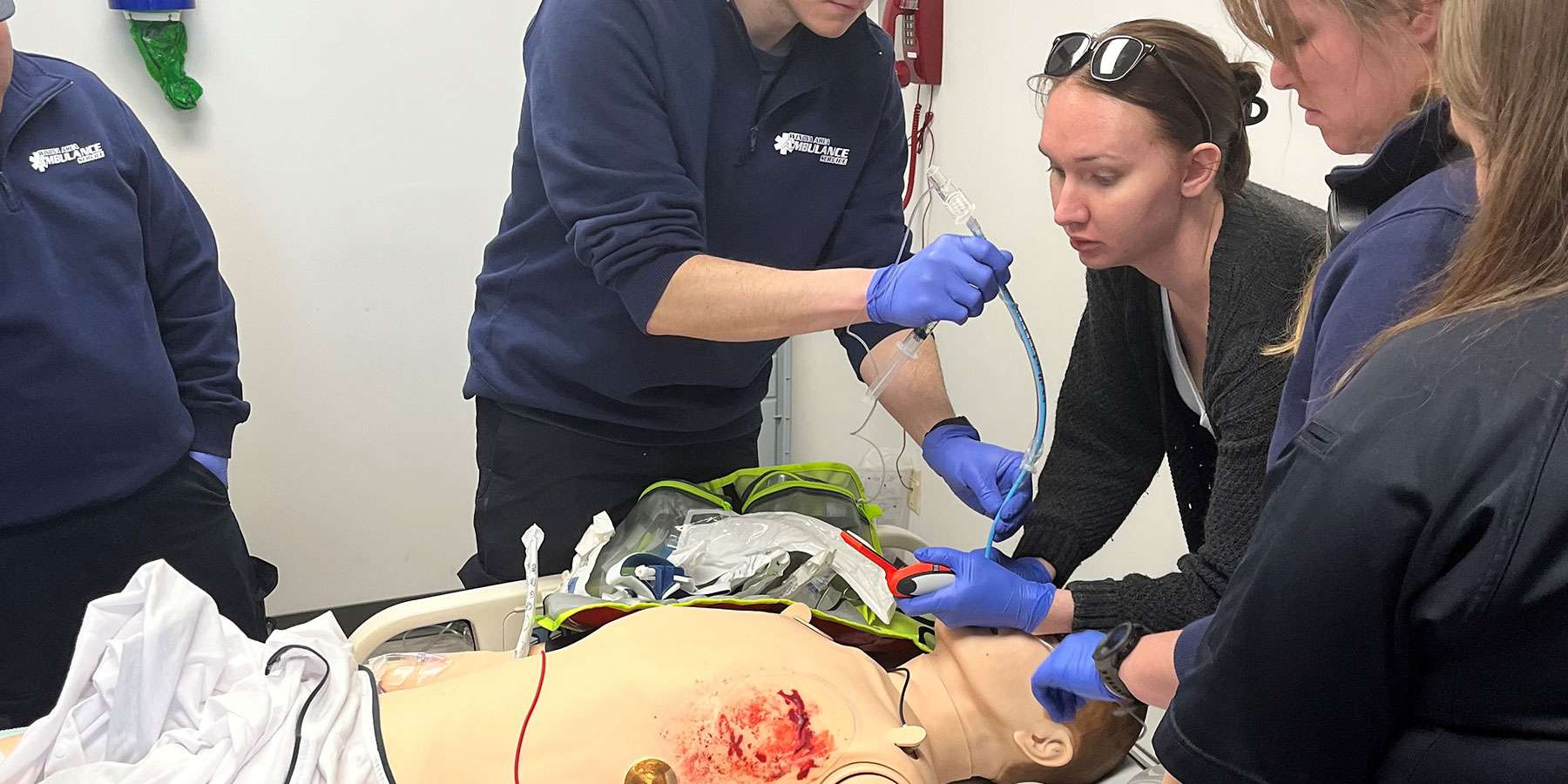Elevating Patient Care Through Simulation
Customer Story

Customer Story

Winona Health, a rural community hospital in Winona, Minnesota is using simulation training to prepare their new and veteran caregivers to deliver the best possible patient care.

Winona Health is an independent, community-owned, not-for-profit healthcare provider in Winona, MN that’s been serving the community since 1894. It includes a 49-bed hospital, a family birth center, primary and specialty care clinics, a nursing home, an urgent care clinic, and an emergency department.
“Here at Winona Health, we truly value the importance of developing our caregivers and our staff,” explains Karla Eppler, ME-PD, NRP, former Director of Learning and Development at Winona Health. “We want to provide opportunities for them to practice and advance their skills.”
Thanks to generous donors, this rural community hospital was able to build a simulation lab that includes high-fidelity manikins ranging from newborn baby to adult. In this safe training environment, caregivers have opportunities to strengthen their skills and build confidence without risk to real patients.
- Karla Eppler, ME-PD, NRP
Former Director of Learning and Development at Winona Health

In 2023, the simulation lab received Minnesota Hospital Association’s Workforce Innovation Award. This accolade recognizes organizations’ workforce development initiatives and the positive impact they have on patients, workplaces, and larger communities.1
Offering professional development opportunities through simulation has also played a role in helping recruit staff in some cases. Some of their current providers have said that seeing a sim lab in a rural community hospital impressed them – and that it impacted their decision to choose Winona Health.

The simulation lab plays a key role in efficiently orienting new CNAs working in the nursing home connected to the hospital. These CNAs come to the sim lab and spend time with Nursing Anne Simulator, a manikin that allows them to master skills including:
New nurses on the inpatient side of the hospital spend time in the sim lab for orientation as well. One especially crucial area of training focus is the ICU.
“We’re getting younger nurses in the door – nurses that are just completing nursing school. We want to ensure they are ready to be in a critical care area,” Karla shares. “So we’ve worked really hard with our ICU Manager to create specific simulations for these new caregivers.”
Beyond orientation, the sim lab helps with other training needs that the new nurses encounter. “If they have an experience with a certain type of patient, we can bring that experience back into the sim lab and simulate it and [ask,] “What would we do better? What are opportunities for improvement?” Karla says.
The simulation lab serves as a risk-free training environment where caregivers can feel prepared for emergencies that don’t happen often.
- Courtney Wieser
Simulation Technician, Winona Health

The ICU had recently had a patient with a rapidly evolving case of sepsis. Everything needed to be done in an extremely timely manner, from giving the antibiotics to administering the fluid bolus.
"They did it appropriately, but it was so fast and clustered that they didn’t really get any learning out of it," explains Courtney Wieser, Simulation Technician at Winona Health. “So we mimicked it so that the new caregivers, and even our veteran ones, could practice that scenario.”
During the sepsis simulation scenario, caregivers used SimMan 3G PLUS to practice all the key steps and talk about the reasoning behind them. And, they were able to hone the crucial teamwork and coordination skills that are critical in a scenario like this.

When a new protocol is rolled out, the sim lab is used to ensure that it’s working as expected.
When the hospital’s pharmacy department created a new protocol for anaphylaxis, the nurses were brought in for a simulation scenario focusing on anaphylaxis from an allergic reaction. The nurses had to initiate the protocol so that they could ask questions and identify any kinks in the protocol.
"That way, when they have a real patient with that anaphylaxis or allergic reaction scenario, they know what to do," Courtney explains.

Simulation training isn’t limited to just the sim lab. They frequently run simulations in situ, or in the actual practice environment where care is delivered. Simulations have been run in areas spanning the ICU, to the OR, to the Family Birth Center.
- Courtney Wieser
Simulation Technician, Winona Health

Beyond training, running these in situ simulations has also helped the hospital identify latent safety threats – or "accidents waiting to happen" – in the work environment.
For example, during a precipitous birth scenario that they ran in their Women’s Health Clinic, they realized that the clinic didn’t have the clamp that they needed for the umbilical cord in their precipitous birth kit.
"I don’t know if we would have noticed that if we didn’t run that scenario over there," says Courtney.
They were able to fix the problem and obtain the right clamp before they ever actually needed it for a real patient.

In addition to managing training for the clinic, nursing home, and inpatient staff, they also bring in the local EMS, paramedics, and fire departments for training.
"It’s a great way to start to integrate different kind of caregivers and begin to understand the perspective of someone else," explains Karla. "Oftentimes, we get focused on ‘What’s important for me?’ And the reality is, the next person that's going to care for that patient has maybe a different priority or different skills. It’s good for others to see a bigger scope than just their smaller world."
- Karla Eppler, ME-PD, NRP
Former Director of Learning and Development at Winona Health
 .
.Tilmeld dig nyhedsbreve med invitationer og produktinfo fra Laerdal Medical. Du kan angive dine interesser og modtage nyt uddannelsesindhold, opdateringer, oplysninger om events, netværksmøder og meget mere.